Over the past several years, I’ve become increasingly involved in the long-standing project known as the Sources of Anglo-Saxon Literary Culture (SASLC). First, I joined the project as a contributor, working on a series of entries (Pseudo-Bede) that seemed, at the time, untouchable. In 2014, I took on a role to help the project increase its online presence and move toward digital publication, and, in 2016, I joined the Editorial Board.
More recently, I’ve been considering the SASLC project within the larger scope of medieval studies and the ongoing conversations about diversity (or problems with diversity) in the field. (Among the links provided below, see especially resources at the Society for Medieval Feminist Scholarship website; and this crowd-sourced Race and Medieval Studies Bibliography, maintained by Julie Orlemanski and Jonathan Hsy.)[1]
In this post, I want to consider this ongoing conversation, speak from my position of privilege, and listen to the voices who are calling for change. I also want to reflect on several questions about seeking equity and creating equality that guide my thoughts in this post (more on these below). While my perspective is largely focused on SASLC, I hope that much of this can be similarly extended to other institutions and organizations in the field.
At the start, I want to offer several caveats. First, I write this as a member of the Editorial Board of SASLC, and one who is interested in seeing the project flourish into the future. I care deeply about this project, believe that it is an important one for the field, and believe in taking stock of criticisms to make the field better. But, second, I write this from my own personal perspective, not on behalf of SASLC, nor under its auspices, nor with any kind of authority from the project’s other leaders. Finally, I write this as a cis, white, able-bodied man with a tenure-track job, and I must acknowledge my privilege in that position, socially and academically.
An Image Problem
As medievalists know, and as recent conversations have highlighted, the field known as “Anglo-Saxon studies” faces many reasons for reflection and change.
For example, a recent post by Elaine Treharne has raised the issue (and caused much discussion; link will only work for members of the Anglo-Saxon Studies group) about how our common terminology matters both within and outside of academia. Titles like “Anglo-Saxonist” and related terms are fraught with background. It is a striking and distressing fact that the second definition of “Anglo-Saxonist” in the Oxford English Dictionary indicates “A person who believes in the importance or superiority of Anglo-Saxon language, people, or culture (past or present).” This is a racist perspective that easily foments white supremacy. Historiographic, nationalistic, racist, colonialist ideologies have been projected onto the past by appropriating such terms, and the damages are still very much with us.
For scholarly organizations like the International Society of Anglo-Saxonists (ISAS) and academic projects like the Sources of Anglo-Saxon Literary Culture, the problems of terminology need to be considered, at the least. The future of Anglo-Saxon studies (which I use as a term consciously, but not unreflectively, because of its commonly accepted use [for now] in the field) rests on such considerations.
Beyond terminology, however, there are other considerations. It is likely not a surprise to anybody that the reputation of traditional Anglo-Saxon studies is also problematic within academia. Foremost is the reputation for being the purview of white men. The Rawlinson and Bosworth Professorship of Anglo-Saxon Studies has been held only by white men. Similarly, the major journals in the field, Anglo-Saxon England and the Old English Newsletter, have been predominantly overseen by white, male editors. The Sources of Anglo-Saxon Literary Culture was founded and, until recently, primarily directed by white men (see more on this below).
Raising these criticisms is not meant to direct specific judgment, but to point out an unfortunate aspect of our field: as with all parts of society affected by structural sexism and racism, Anglo-Saxon studies has marginalized those who are not white men.
Over the past few years, medieval studies generally and Anglo-Saxon studies specifically have had to face intersecting issues. Early 2016 brought a prominent outcry for examining structural sexism in the field. This was largely sparked because of controversy around Allen Frantzen’s personal anti-feminist website. Furthermore, close connections exist between the intersectional issues of sexism and racism, especially in alt-right (white supremacist) ideologies.
In 2017, there has been both an appeal to examine whiteness in medieval studies by Medievalists of Color and conversations about diversity coming out of events at the annual International Medieval Congress. More specifically, Adam Miyashiro has raised criticisms in response to the 2017 ISAS meeting in Honolulu. All of this has been precipitated especially by a rising awareness of white supremacists appropriating medieval studies (particularly Anglo-Saxon studies) for their causes.
As Mary Dockray-Miller has pointed out, “Old English has a serious image problem.”
One reaction to facing criticisms would be to react defensively. We might cry out, “Not all Anglo-Saxonists!” or–in the case of my own situation–“Not all contributors to SASLC!” We could point out the many women who have joined SASLC and contributed to it over the years. (And I’ve just done this, haven’t I?) But good intentions need to be paired with actions that bring about structural change. Nor is inclusion the only issue at stake.
With this post, I want to consider other ways forward, with less defensive posturing. I want to ask, in all seriousness and openness: How do we meaningfully seek equity, decolonize, enable inclusion, foster diversity, and bring about change within established groups like SASLC? How can we move away from the mere rhetoric of diversity and inclusion to create a field that genuinely rests on equality? How can SASLC help to boost the voices of those scholars who are marginalized? How can the project and its foundations be used to create a future medieval studies that is better for all?
The Theory of SASLC
A brief history of the SASLC project is useful. It was founded by James Cross, Tom Hill, and Paul Szarmach–all three respected men in the field–who wanted to gather a team of scholars interested in extending the work of J. D. A. Ogilvy in his Books Known to the English, 597-1066 (Cambridge, MA, 1967). SASLC’s self-stated goal is (as it always has been) “to map the sources that influenced the literary culture of Anglo-Saxon England.” At the same time, the complementary project, Fontes Anglo-Saxonici (Fontes), was also begun in England. SASLC has continued, in various ways, publishing a number of volumes, with that same goal in mind, up to the present.
At its heart, as its name suggests, SASLC is a project rooted in source study. It is, in its most basic pursuit, a bibliographic undertaking, which seeks to provide encyclopedic knowledge about what has been said about the use of sources in Latin and Old English literature. As I’ve already stated, I believe that this work remains valuable to the field. SASLC provides an account of basic knowledge that allows for future studies.
Other implications arise from acknowledging these roots in source study. SASLC is driven by a methodological approach that places its theoretical basis in line with nineteenth-century developments in the field of “textual criticism”–concerned with philological and literary criticism. It’s important to note that such philological and source studies were (and, erroneously, sometimes still are) considered part of “scientific” endeavors.
There are, of course, relevant criticisms to the text-critical and philological underpinnings of source study. Certainly pretenses to “scientific” inquiry have lead to problematic, empiricist notions of positivism. Indeed, source study rests on its own methodological assumptions and, like all methodologies, is not immune to necessary reflections on its weaknesses as well as its benefits. Even J. R. R. Tolkien (a traditional philologist if there ever was one) criticized source study in his famous 1936 lecture on Beowulf.
What I mean to highlight with these reflections is an important point: this work is theoretically grounded. The methodological assumptions of source study rely on the foundational theories of textual critics (from the nineteenth century up to the present). Amid the many critical theories that emerged in the latter half of the twentieth century, it can be easy to lose sight of this fact when considering traditional approaches.
All scholarship is underpinned by theoretical foundations.
There are also associations, actual and perceived, between traditional modes of scholarship like source study and academic attitudes about them. Again, I might turn to assumptions that philological inquiry (and its outgrowths, such as source study) has remained the realm of white men, whereas inquiry with “critical theory” has emerged as the realm of those who identify as feminists, people of color, lgbtq+, etc.
Framing the conversation in these terms also establishes a binary that is harmful for all scholarship. In many ways, such a divided view of scholarship reifies the assumption that approaches must remain divided. (Beware tautology.) It creates the sense that some scholars must only be allowed to work in traditional methodologies while other scholars must only be allowed to incorporate critical theory. At root, such divides marginalize: distinctions marginalize those who are attracted to critical theory as well as those who find themselves benefiting from the whole range of methodologies.
Establishing binaries between methodologies (“traditional” and “theoretical”) also creates an erroneous picture of work of the field. Many scholars–contributors to Fontes and SASLC as well as many others–have found useful ways to bring together both source study and critical theory. In an important essay for the field of source study (originally given as the T. Northcote Toller Memorial Lecture at the University of Manchester in 1993), Katherine O’Brien O’Keeffe[2] amply demonstrates how critical theory helps to address source study in new ways. She also points out that such questions were already present at the start of Fontes and SASLC, as Colin Chase considered them at the event that sparked both projects, the 1983 Symposium on the Sources of Anglo-Saxon Culture (proceedings published in 1986).
In all of this, SASLC is both a major contributor to source study and the basis of work that rests on its production of knowledge. But source study is not an end in itself. It also remains a valuable basis for work that embraces diverse voices and approaches both within the project and in the wider field. As such, it is a project that (like the rest of the field) needs to reflect on its methodologies at the same time that it invites new voices.
At the end of her essay, O’Brien O’Keeffe levels an argument that Anglo-Saxon studies is still attempting to come to terms with: “that these two sorts of discourses (the ‘documentary’ heuristic of source work and ‘post-modern’ critical analysis) are incommensurable, that they proceed from complementary presuppositions, but that they are both necessary for the development of the field when they are understood to work in conjunction.” This conjunction is the work that SASLC can enable, foster, and help to expand.
These same notions also point to the need for scholars of traditional approaches to lean into this conjunction. In other words, scholars who prefer traditional methodologies need to read and reflect on critical theories of gender and race, even if those theories do not directly inform their scholarship.
Source Representation Matters
There is also potential for emphasizing the global Middle Ages by way of considering representation in the realm of source study. After all, not all sources used in Anglo-Saxon England came from Western Europe. Many came from North Africa, Eastern Europe, and the Middle East. Similarly, the authors of these texts were not Western Europeans.
Apocrypha (one of my personal areas to study) provide abundant examples. Anglo-Saxon literature share parallels with extra-biblical texts in Hebrew, Aramaic, Greek, Coptic, and Ethiopic. What are the global connections that precipitated these parallels? What do these connections reveal about the diversity of the medieval world, and Anglo-Saxon England within that larger context? We shouldn’t forget that even the Bible (both the Hebrew Bible and the Greek New Testament) was written by Middle Eastern authors under colonial rule, not the European Christians who later used it for their own imperialist aims. Here postcolonial theory could prove useful for examining sources as well as their long histories of transmission and reception. Exploring these subjects is certainly one way that the findings of SASLC can open new ways of considering “Global Perspectives.”
For more specific cases, we might consider three examples: Augustine of Hippo, Theodore, archbishop of Canterbury, and Anglo-Saxon women in legal records.
As a patristic author (note the androcentrism even in that term), Augustine of Hippo (354-430) tends to be lumped into the category of old, white, male authorities (for more, see this book). And, given his legacy, this is fair. Certainly this is the way his legacy has been used by other white male authorities. Yet it is also easy to lose sight of the fact that Augustine was from North Africa, born in the Roman-Berber city of Thagaste, in present-day Algeria. His father was a Roman, and his mother was, most likely, a Berber. He likely grew up in an environment where he learned both his father’s and mother’s native languages, Latin and Berber. By the time of his birth, North African Berbers were already a multi-ethnic people group influenced by the diversity of the Roman Empire around the Mediterranean. This seems to have influenced his thinking later in life, as he identifies as North African, as he writes of “us Africans” and calls other North African figures “ours” as countrymen. Augustine’s identity was certainly multifaceted.
Theodore of Tarsus (602-90) was born in a region of present-day Turkey (for more, see this book). Incidentally, the year of his birth also brought about a twenty-six-year war between the Byzantine and Persian Sassanian empires in his own homeland. His childhood was filled with multi-ethnic encounters. He saw Greek and Persian cultures first-hand in Tarsus; he gained his education in Antioch and later in Constantinople; he learned Syrian culture, language, and literature; he saw the emerging culture and religion of Islam expand toward his home–possibly encountering Muslims in person; and he learned about Roman and Christian Latin literature while living in Rome. In 669, Theodore took this multiculturalism with him when he moved to England and became the archbishop of Canterbury. With him went his friend Hadrian (d.710), a North African (probably a Berber) who became abbot of St. Augustine’s Abbey in Canterbury.
Considering these brief biographies, it is significant that Augustine, Theodore, and Hadrian were multi-ethnic, multilingual, and arguably multiracial. Of course, we need to acknowledge that modern social constructs of race are not wholly applicable in these cases, but the ethnic diversity of such figures and the implications for global medieval studies matter. And yet, unfortunately, these points about Augustine and Theodore remain factual points in their biographies, not fully interrogated in larger contexts. Why have these details gone unexplored?
We can also consider the influences of Anglo-Saxon women on legal practices (following, for example, recent work by Andrew Rabin). We have little surviving literature penned by known or named Anglo-Saxon women–a product of a textual record dominated by men, which normalizes ideas of textual production by men. Yet SASLC’s stated goal of tracing “the sources that influenced the literary culture of Anglo-Saxon England” might also extend to considering how advocates like Queen Ælfthryth affected legal texts; or it might encompass how charters represent women like the “Peterborough Witch” or the noblewoman Wynflæd acting as litigants in legal cases. Scholars could pay more attention to Anglo-Saxon women who might be otherwise marginalized make their voices known through legal documents.
These are only a few specific examples, but many more abound. We could also consider the influence of Jewish authors like Philo and Josephus; Muslim influences like those on Offa’s imitation gold dinar with an Arabic inscription; the influences of various classical, patristic, and medieval texts on Anglo-Saxon attitudes about gender and race; or the many anonymous Latin and Old English texts that might have been written or influenced by women.
Highlighting such examples of premodern diversity matters for decentering narratives that often focus on traditional, normative subjects. They also undercut modern racist narratives by those who claim that diversity did not exist before the twentieth century.
SASLC (and Anglo-Saxon studies more widely) needs studies of people of color, women, and gender issues in Anglo-Saxon England; at the same time, it also needs scholars of color, feminist scholars, and lgbtq+ scholars working on the sources of Anglo-Saxon England. Beyond the specific goals of SASLC as a project, the larger field also needs studies that use bibliographical data about sources to create new narratives and theoretical examinations of the historical issues at stake.
Ways Forward
As we consider the future of our shifting field, we also need to reconsider the shifting roles of our established institutions and organizations. How we approach equity and equality is central to how we forge a new future for our field.
One way in which SASLC has already attempted to reconsider its shifting role in academia is its publishing model. Indeed, one of the main goals over the past few years has been to embrace a publication plan that includes open access. Issues of open access and equity go hand in hand (also see this post, especially the latter part). This point is especially apparent in an age of predatory publishing, for-profit companies taking advantage of scholars, and shady online repositories. But this is only one starting place.
Highlighting diversity is also key. This is part of our impetus for expanding the SASLC Editorial Board, which now includes a group of international scholars, both men and women, across a range of career stages.
Highlighting diversity within Anglo-Saxon culture is one way forward, but we also need to highlight diverse voices within Anglo-Saxon scholarship. As we put out a new call for members of the project, we invite the work of diverse scholars in contributing to the future of SASLC.
[1] I am happy to acknowledge two friends who have especially helped me by discussing and providing feedback on this post. With their perspectives as a queer woman and a queer trans man, both have provided significant criticisms, comments, and suggestions. While they wish to remain anonymous, I owe them immense gratitude. You know who you are, so thank you.
[2] I want to digress to note a fact related to the issues I’m discussing: I was rather disturbed to see on the Wikipedia page about the T. Northcote Toller Memorial Lecture that six “notable lecturers” are listed, but only one of them is a woman: Barbara Yorke. This case thus represents another problem of representation for Anglo-Saxon studies. Whereas a Wikipedia page like the one for the Rawlinson and Bosworth Professorship of Anglo-Saxon Studies contains a list of every man who has held the position, the page for the Toller Memorial Lecture includes only a selection, which excludes all but one of the women who have had this distinction. Other women who have given the lecture include: Janet Bately, Roberta Frank, Joyce Hill, Audrey Meaney, and Joana Proud (whose lectures are published in this volume), as well as Leslie Webster (according to this site), Elaine Treharne (2005), and, most recently, Clare Lees (2016). I have been unable to find a full list online of those who have delivered the lecture to date (the common link cited loads only an error page), even by searching the University of Manchester website.
![]()
![]()
















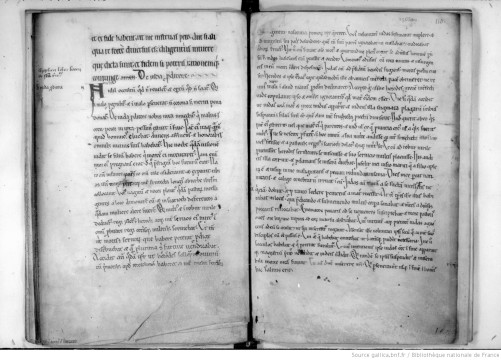




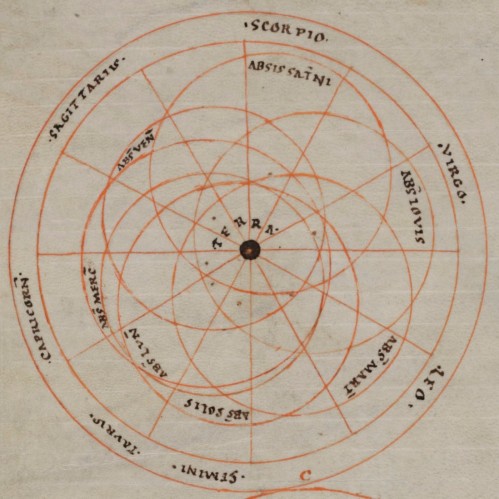
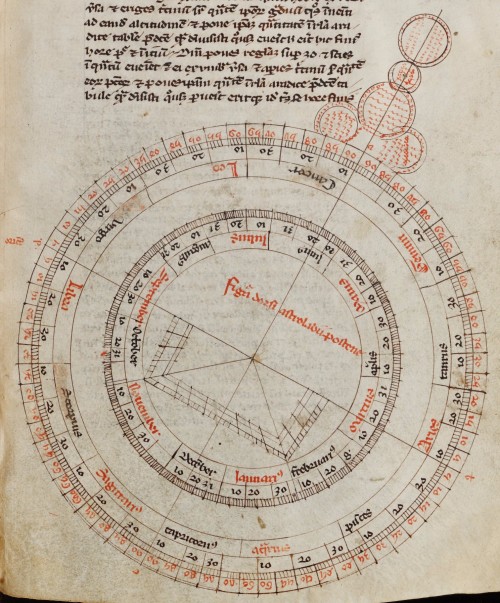

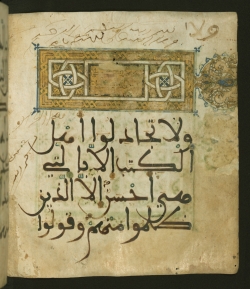

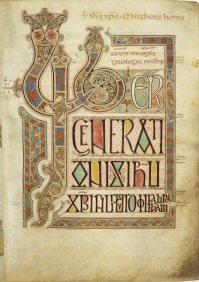 In a related way, but more generally than my previous points, the last page of the Jedi scriptures resembles
In a related way, but more generally than my previous points, the last page of the Jedi scriptures resembles  Medieval sacred chants were also prevalent, yet another way that books spoke in the medieval period. After all, chants were needed for Christian worship in monasteries and churches throughout Europe. The
Medieval sacred chants were also prevalent, yet another way that books spoke in the medieval period. After all, chants were needed for Christian worship in monasteries and churches throughout Europe. The 
 Equity in Access
Equity in Access





















 All of my data for this research is posted on
All of my data for this research is posted on 










